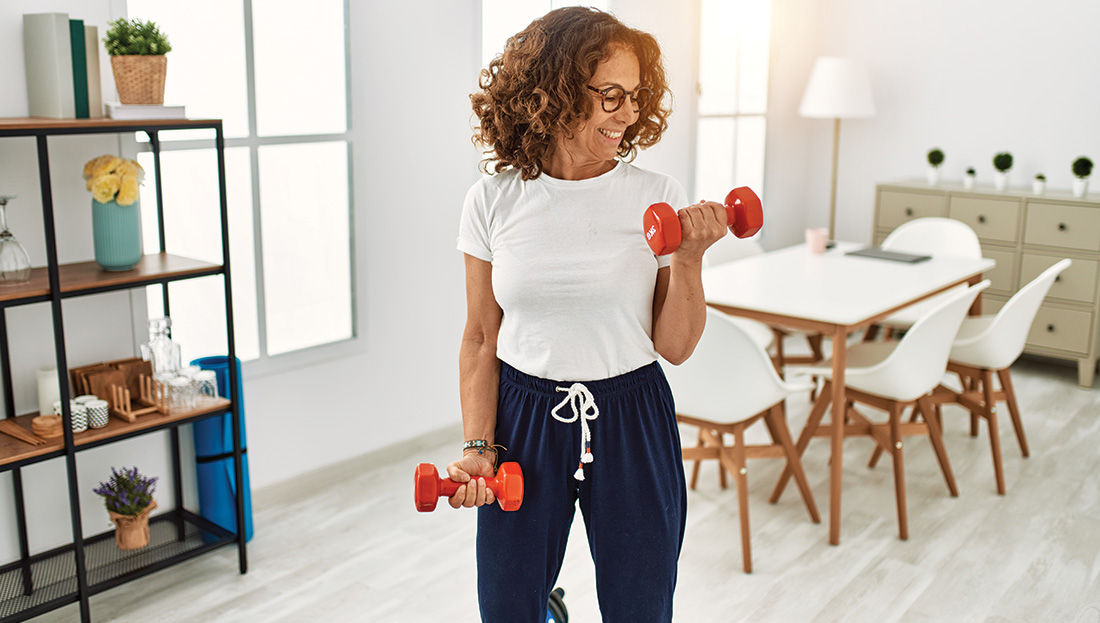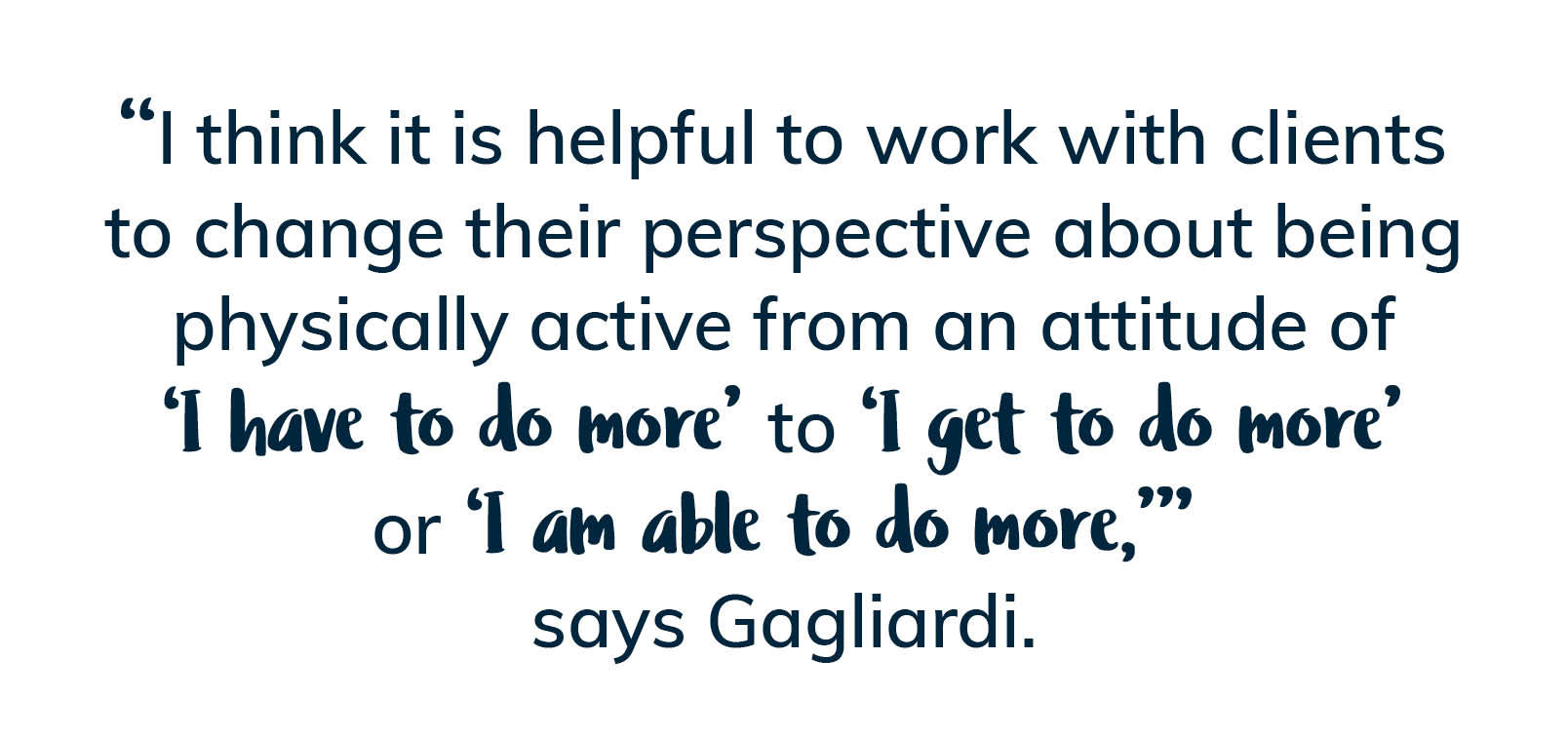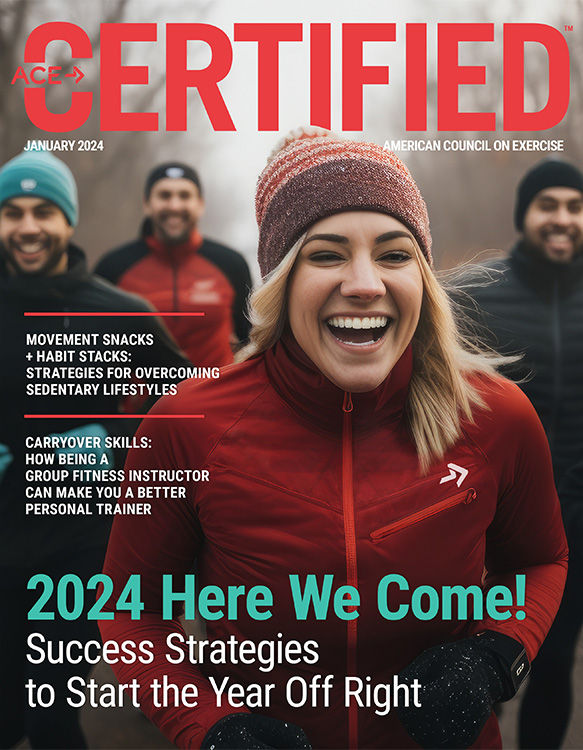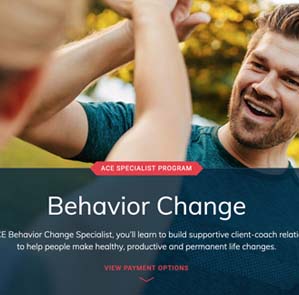
From the invention of the wheel to the advent of smartphones, one of the primary goals of advancing technology has been to reduce human labor and improve efficiency. And that’s almost always a good thing. But it seems we’ve reached a turning point, where we’ve gone too far, become too sedentary, and are now trying to find ways to reengineer our lives to add some of that lost movement back into our days.
The reduced physical activity trend was only accelerated by the pandemic, as more and more jobs shifted to being done remotely from the comfort of our homes, eliminating the walk to and from our cars, walking meetings at lunch time and even strolls around the office to pop into coworkers’ cubicles. Now, instead of those walking meetings, we’re positioning treadmills below our standing desks and setting phone alerts to remind us to move.
Many of your clients likely work in sedentary jobs, whether at home or in the office. In addition, they’re also hearing pretty alarming phrases out there in the health and wellness ether, like “We’re in a comfort crisis,” and “Sitting is the new smoking.” Your role is to not only give clients tools to disrupt their sedentary lifestyles, but also to put their minds at ease and help them avoid getting so discouraged that they throw in the towel.
This article unpacks the benefits of short bouts of physical activity and provides strategies you can share with clients to help them break up their sedentary days with some much-needed movement.
The Value of “Movement Snacks”
There is great benefit from the accumulation of short exercise bouts, or “movement snacks,” both physiologically and psychologically. “The Physical Activity Guidelines for Americans and the WHO Guidelines on Physical Activity and Sedentary Behaviour are clear that doing some physical activity is better than doing none and bouts of physical activity of any duration contribute to the health benefits associated with the total accumulated volume," explains Chris Gagliardi, MS, Scientific Education Content Manager at ACE and an ACE Certified Personal Trainer, Health Coach, Group Fitness Instructor and Medical Exercise Specialist. “In other words, everything counts.”
Lance Dalleck, PhD, professor of Exercise and Sport Science at Western Colorado University, explains the physiological side of things: “If we remember back to high school biology, the molecule adenosine triphosphate (ATP) is the form of energy your body cells use to do their work, including to support muscle contraction. The reason why sedentary behavior is unhealthy can be explained in large part by ATP. Two of the primary fuels used to regenerate ATP in skeletal muscle cells are blood glucose (i.e., a carbohydrate) and blood triglycerides (i.e., a fat). When we move regularly, we create an increased demand for ATP, which in turn uses high levels of carbohydrate and fats. However, when we are sedentary for large parts of the day, there is a diminished need for ATP and, consequently, these metabolic fuels are not used. Both elevated levels of blood glucose and blood triglycerides are well-established risk factors for various chronic conditions, including metabolic syndrome, type 2 diabetes and cardiovascular disease.”
Some evidence-supported benefits of taking short activity breaks include:
Overcoming an Emotional Obstacle
One potential issue when trying to get buy-in from clients on the need for movement snacks is the understandable feeling that going to the gym a few days a week for cardio and strength training should be enough. Many people have likely spent a lifetime hearing about the need to do cardio, lift weights and maybe go for walks after dinner a few days a week. Now, you’re introducing the need for another form of movement to their lives, and there may be some reluctance at first.
As Dalleck explains, physical inactivity and a sedentary lifestyle are two distinct things, and they require two different approaches. Physical inactivity is remedied by those gym visits and after-dinner walks, but a client can meet the Physical Activity Guidelines and still be sitting too much throughout the day—and suffering the health-related consequences of doing so. Therefore, he says, it’s important to encourage both regular physical activity and reduced sedentary time and to establish plans and set goals around both of those outcomes.
To be clear, short bouts of movement are not meant to replace workouts, but complement them. Structured workouts are about being physically active in an effort to pursue health and fitness goals, while movement snacks are about countering a sedentary lifestyle and preserving one’s health.
Jen Kates, an ACE Certified Health Coach and the owner of Shift Human Performance, reminds her clients that movement snacks are an opportunity to “refresh their eyes, their bodies and their mindset.” She will often ask her clients, “How do you feel after a workout?” and they typically respond positively, saying they feel great, both mentally and physically. Movement snacks, Kates explains, allow a person to experience that feeling throughout their day. It’s a means of breaking up the stagnation of a long workday.
“I think it is helpful to work with clients to change their perspective about being physically active from an attitude of ‘I have to do more’ to ‘I get to do more’ or 'I am able to do more,’” says Gagliardi. This change in mentality, he says, can take time, but if the activity is viewed as a reward or privilege instead of a chore or task, clients may begin to look forward to the opportunity to step away from their work and move around a bit.
Gagliardi also likes to look at the numbers to align expectations. “If a client is thinking they can exercise for three hours per week to offset being sedentary 12 hours per day, then we need to discuss reality versus expectations.”

Also, Gagliardi suggests, remind clients that physical activity guidelines are typically worded using the words “at least,” meaning that by pursuing those recommendations, a client is actually working toward the minimum requirement for substantial health benefits. This can sound awfully discouraging, particularly if a client is not yet able to perform that volume of exercise, but this is where your expertise and coaching abilities are required.
“I have used the ACE Mover Method™ to help clients reduce sedentary time,” says Dalleck. (To read about Dr. Dalleck’s approach, read his article Reducing Sedentary Time and Improving Health Amidst COVID-19.) He explains that the difficulty isn’t typically in convincing clients of the need to avoid sitting for prolonged periods of time, but rather in knowing how to build a successful strategy into the day to reduce sitting time.
Strategies for Breaking Up Sedentary Time
“On our campus,” Dalleck says, “a tactic that has worked well is to form a buddy system, where coworkers agree to walk around the three-story building every couple of hours for five to 10 minutes (taking the stairs and going down long hallways). Also, during this time, getting a drink of water or coffee or tea is encouraged to stay hydrated. We rotate, so you are doing this with different individuals throughout the day and across the week. The benefits go beyond physical, as it’s good social time as well.” See below for more on the importance of social connection and some strategies that might help.
While movement breaks are not meant to replace a client’s workouts, the reality is that there are going to be times when life gets in the way, making a trip to the gym impossible. On those days, Kates suggests having clients review their planned workouts and perform modified versions of them over the course of the day. For example, they might make their first movement break a five-minute warm-up mobility routine. During other movement breaks, they can perform sets of body-weight exercises such as squats, push-ups and lunges. These breaks may not yield the full benefits of the planned workout, but they allow the client to adapt to their circumstances and do the best they can that day.
Another creative way a client can add movement to their routine is something called habit stacking, which involves adding a “should” between a “have to” and a “want to.” For example, after dinner, a client may “have to” load the dishwasher and “want to” start binging a new TV show. Between those two events, they can insert something they “should” do, like go for a walk or do some stretching. Eventually, that chain of events may become a habit.
During the workday, habit stacking can take on another form and be an effective way to achieve multiple objectives during a single, short movement break. For example, if a client who works remotely has established two goals for their movement snacking routine—climbing stairs and staying hydrated—they can identify times during their workday when they can stack those new habits. If they have three meetings on a particular day, immediately after each meeting they might walk a few flights of stairs in their apartment building or walk from their second-floor home office down to their basement, and then stop to drink a glass of water on their way back to their desk.
Consider these other strategies offered by Kates and Gagliardi that you can share with your clients:
- Set alarms in your phone to remind yourself of the need to step away from your desk. And don’t ignore those reminders!
- Hold “movement meetings,” where you either meet a colleague outside the office for a 15-minute walk around the building or through a local park. Or, if it’s a phone meeting, head outside and walk as you talk.
- If you work from home, make things a little less convenient. Use the bathroom farthest from your desk or keep your water bottle on a separate floor so you have to climb a flight of stairs each time you want a drink.
- Keep some exercise equipment in your office, such as dumbbells, resistance bands or a yoga mat. This will make transitioning to a movement snack a bit easier.
- Have healthy snacks prepared before you start your day, such as pre-washed fruits and veggies. And, again, store them somewhere that requires you to get up and move to go get them.
- Combine simple movements with events that naturally occur during your workday. For example, do 30 seconds of jumping jacks every time you hang up the phone or a set of push-ups at the end of each meeting. Or celebrate the completion of a task with a movement break you particularly enjoy.
Another vital component of mental health that was negatively impacted by the pandemic was social connection. So many people struggled, and continue to struggle, with maintaining those core relationships that sustain us during tough times. Share the following tips with your clients who are looking for ways to add a social component to their physical activity:
- Schedule breaks with a friend, neighbor or coworker. For example, ask if they’d like to meet you for a short walk before they begin their workday and again after lunch. If you have a home gym, even it’s just a set of dumbbells and a stability ball, invite a friend or neighbor over to join you for one or two movement snacks each day.
- If walking or exercising with a partner isn’t possible, call a friend or family member during one movement snack each day.
- If working from home, make movement a family affair by inviting your spouse or children to join you. A 15-minute break to kick the soccer ball around with your kids can do wonders for your mood.
- Add a destination to your walks. You might walk to a local coffee shop each morning to meet a friend or chat with people in the community.
In Conclusion
The need for all this movement can feel overwhelming, particularly for clients who already struggle to complete their structured exercise consistently, so remind clients not to be too hard on themselves. Encourage them to do the best they can each day and give themselves some grace and compassion if they can’t adhere to the plan at times. No one is perfect and life always seems to find a way to disrupt even the best-laid plans. Your role as a health coach or exercise professional is to empower clients with the tools and strategies they need to be successful and perhaps with the education showing that this is an evidence-based approach to better health and wellness.
Expand Your Knowledge
ACE Behavior Change Specialist Program
The ACE Behavior Change Specialist Program presents the key tools to promoting behavior change and creating a foundation for a healthy lifestyle. You will learn how to help clients of all backgrounds recognize counterproductive behaviors and coach them to discover new methods to move more, eat better and make healthier decisions for themselves and their families.
Improving Wellness Through Behavior Change – Course Bundle
Effect and inspire positive lifestyle change within your clients by applying behavior change strategies. Whether you are coaching clients in chronic pain or stress management, the Improving Wellness Through Behavior Change course bundle has you covered. Learn the latest techniques and strategies to work more effectively with your clients so they can establish healthy habits that last a lifetime.
Case Study: A Healthy Lifestyle
Based on the research series “ACE Health and Wellness Reports,” the behavior-change strategies, practical tips and real-world examples covered in this detailed course can be used with nearly any client seeking weight loss or a more consistent exercise/nutrition plan. You’ll get the opportunity to examine a case study of someone who has lived through the ups and downs of long-term behavior changes. Ultimately, you’ll be better able to apply both sets of federal guidelines and provide real-world guidance and motivation to clients struggling to improve their overall health and performance.





 by
by 






